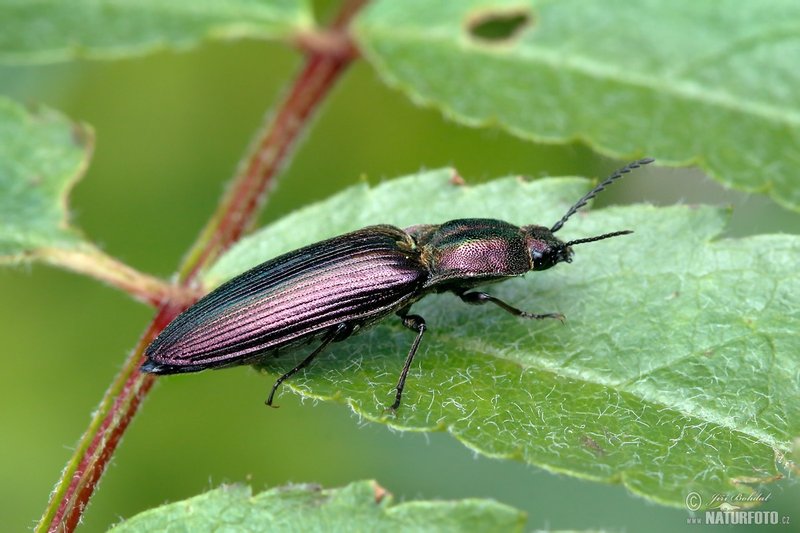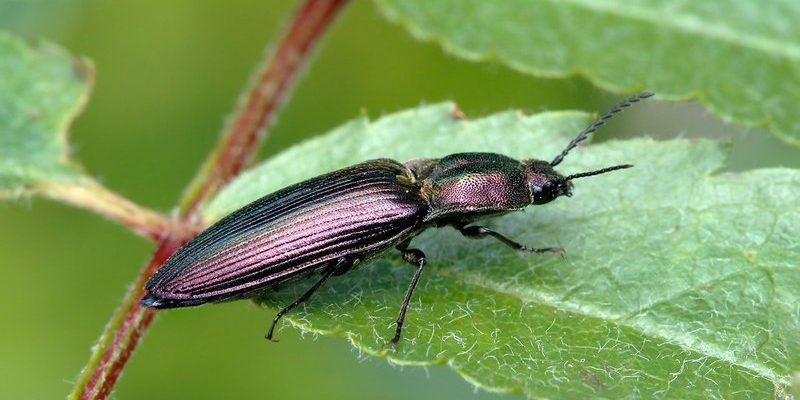
Have you ever heard of the Click Beetle? These fascinating insects are known for their unique ability to flip themselves into the air with a quick click. It’s like they have their own built-in spring! If you’ve ever been curious about how they do this, where they live, or what they eat, you’re in the right place. We’ll unpack the mysteries of these little critters and explore their incredible lives.
Click beetles belong to the family Elateridae and are found all over the world. Their name comes from the distinct sound they make when they snap their bodies, allowing them to jump away from predators. Imagine a tiny acrobat performing midair flips—that’s essentially what a click beetle does when it’s disturbed! Now, let’s dig deeper into their world, exploring their characteristics, habitat, and behavior.
What Are Click Beetles?
Click beetles are medium-sized insects, typically ranging from 6 to 30 millimeters long. They have elongated bodies and are often found in shades of black, brown, or even vibrant colors. One of the most interesting features of click beetles is their eyes—they are large and can give the impression of being watchful. These insect acrobats might look simple at first glance, but they have some intriguing traits that help them thrive.
They possess a unique mechanism that allows them to flip into the air when they feel threatened. This click mechanism is made possible by a spine on their thorax that snaps into place, creating a forceful upward push. It’s a little like a see-saw—when one side goes down, the other side launches up, sending the beetle flying. This handy trick not only helps them escape predators but also allows them to land back on their feet, quite like a true gymnast!
Habitat and Distribution
Click beetles can be found in various habitats across the globe. They are most commonly seen in forests, grasslands, and gardens. You may spot them under leaf litter or even on the bark of trees. Their habitats provide not only a safe space from predators but also ample food sources. These beetles are attracted to plants and decaying wood, where they often lay their eggs.
What’s more fascinating is that different species of click beetles prefer different habitats. For instance, some may thrive in moist environments, while others can adapt to drier areas. Their adaptability is key to their survival; it allows them to occupy a range of ecosystems from tropical rainforests to temperate woodlands and meadows. This wide distribution increases their chances of encountering food and helps to ensure their populations remain stable.
Life Cycle of Click Beetles
The life cycle of a click beetle involves four stages: egg, larva, pupa, and adult. After mating, female click beetles lay their eggs in the soil or under the bark of trees. When the eggs hatch, the larvae emerge, and they look somewhat like small caterpillars. These larvae, often known as wireworms, are typically brown and slender and spend much of their time feeding on decaying organic matter and roots. This makes them quite beneficial for soil health!
As the larvae grow, they molt several times before they enter the pupal stage. During this phase, they undergo significant transformation. It’s during the pupation that the larvae change into the adult beetles we recognize. Finally, the adult click beetles emerge, ready to start the life cycle all over again. It’s a cycle that showcases the incredible resilience and adaptability of these insects!
Diet and Feeding Habits
So, what do click beetles eat? Their diet primarily consists of decaying plant material, fungi, and sometimes live plants. The larvae, known as wireworms, are particularly fond of feeding on roots and seeds, which may make them a concern for farmers. However, they play a critical role in breaking down organic matter, enriching the soil in the process.
Adult click beetles, on the other hand, tend to eat more diversely. They may consume nectar, pollen, or the occasional plant tissues. This varied diet helps them thrive in different environments. Interestingly, adult click beetles are not only beneficial for their ecosystem but also serve as prey for various predators, including birds and small mammals. Their role in the food chain highlights the interconnectedness of nature.
Physical Features and Adaptations
Click beetles boast some captivating physical features. Their hard outer shell protects them from predators and harsh environments. Additionally, many species display striking colors, which can serve as a warning to potential threats. Some even have markings that mimic the eyes of larger animals—this is known as mimicry and can help deter predators.
One of the most remarkable adaptations of click beetles is their ability to click. This mechanism doesn’t just help them escape; it also plays a role in finding mates. The clicking noise can attract potential partners or send a warning to rivals. It’s like a little concert happening in the beetle world, where each click counts toward survival and reproduction!
Behavior and Defense Mechanisms
Click beetles are quite fascinating when it comes to their behavior. They are mostly nocturnal, so you might not see them out and about during the day. Instead, they prefer to come alive at night, which can help them avoid many daytime predators. When they do encounter danger, their clicking ability becomes their best friend. The sudden flip can startle would-be predators and give the beetle a chance to escape.
In addition to their jumping ability, click beetles also have other fascinating defense mechanisms. Some can release foul-smelling substances when threatened, which can deter larger animals from eating them. Others might employ camouflage techniques, blending in with their surroundings to avoid detection altogether. It’s a survival game, and these beetles have quite a few tricks up their sleeves!
Click Beetles and Their Role in the Ecosystem
Click beetles play a vital role in their ecosystems, contributing to soil health and plant life. As larvae, they help decompose organic material, enriching the soil with nutrients essential for plant growth. Adult click beetles assist in pollination, which is crucial for many flowering plants. In short, they are not just remarkable jumpers; they are also essential players in the circle of life!
The presence of click beetles can indicate a healthy environment. When populations are stable and thriving, it reflects well on the ecosystem as a whole. Hence, if you spot a few in your garden, consider it a good sign! They help keep a balance in nature, supporting both flora and fauna.
Interesting Facts About Click Beetles
| Size: | 6 to 30 mm long |
| Habitat: | Forests, grasslands, gardens |
| Diet: | Decaying plant matter, roots, nectar |
| Life Span: | 1-3 years |
| Defense Mechanism: | Clicking mechanism, foul-smelling chemicals |
FAQ
What attracts click beetles to my garden?
Click beetles are often attracted to gardens that have an abundance of organic matter, such as decaying leaves and wood. They are beneficial because they help break down this material and enrich the soil. If you want to attract them, consider adding compost or mulch to your garden, providing an ideal environment for them to thrive.
Are click beetles harmful to plants?
While adult click beetles are generally harmless to plants, their larvae, known as wireworms, can pose a threat. They tend to feed on the roots and seeds of plants, which can harm young plants or crops. However, they also play a crucial role in soil health, so it’s essential to find a balance and manage their population if necessary.
How do click beetles produce their clicking sound?
The clicking sound is produced through a unique mechanism involving a spine on their thorax. When the beetle flexes its body, the spine snaps into place, creating the audible “click.” This action allows the beetle to jump into the air, helping it evade predators while also making a sound that can attract mates.
Do click beetles bite humans?
Click beetles are not known to bite humans. They are more of a nuisance than a danger. Their primary strategy is to escape from threats by clicking and jumping away, rather than engaging in defense through biting. So, if you come across one, it’s best to admire it from a distance!
How long do click beetles live?
The lifespan of a click beetle can vary based on species and environmental conditions, but generally, they live for about 1 to 3 years. Factors like food availability and habitat quality can influence how long they thrive. If conditions are favorable, you might find them living toward the upper end of that range.
What is the purpose of the click mechanism?
The click mechanism serves multiple purposes. Primarily, it allows click beetles to escape from predators by flipping into the air and landing safely. Additionally, it can help them attract mates or serve as a warning signal to other beetles. This fascinating ability is a key part of their survival tactics!
Can I find click beetles in my backyard?
Yes, it’s entirely possible to find click beetles in your backyard if you provide a suitable environment. They thrive in areas with plenty of decaying organic matter and plant life. If your garden has mulch, compost, or undisturbed soil, you may attract these dynamic little insects. Keep an eye out, especially during the evening when they are most active!
Do all click beetles produce a clicking sound?
Not all click beetles produce the same clicking sound, but the majority of them do have this unique ability. The sound and the force of the jump can vary between species, contributing to their diverse behaviors and adaptations. Each species has its own clicking style, almost like different musical notes in a symphony!
Are click beetles beneficial for the environment?
Absolutely! Click beetles play an essential role in maintaining healthy ecosystems. Their larvae help decompose organic matter, enriching the soil, while adults can assist in pollination. They contribute to the cycle of life, supporting both plants and other animals in their habitat. It’s a classic example of how even the smallest creatures can have a big impact!
How can I encourage click beetles to thrive in my garden?
To encourage click beetles, focus on creating a welcoming habitat. This means adding organic matter such as compost or mulch, which provides food for both adults and larvae. Avoid using chemical pesticides, as these can harm beneficial insects. By promoting a healthy garden ecosystem, you’ll likely see an uptick in these remarkable little jumpers!

